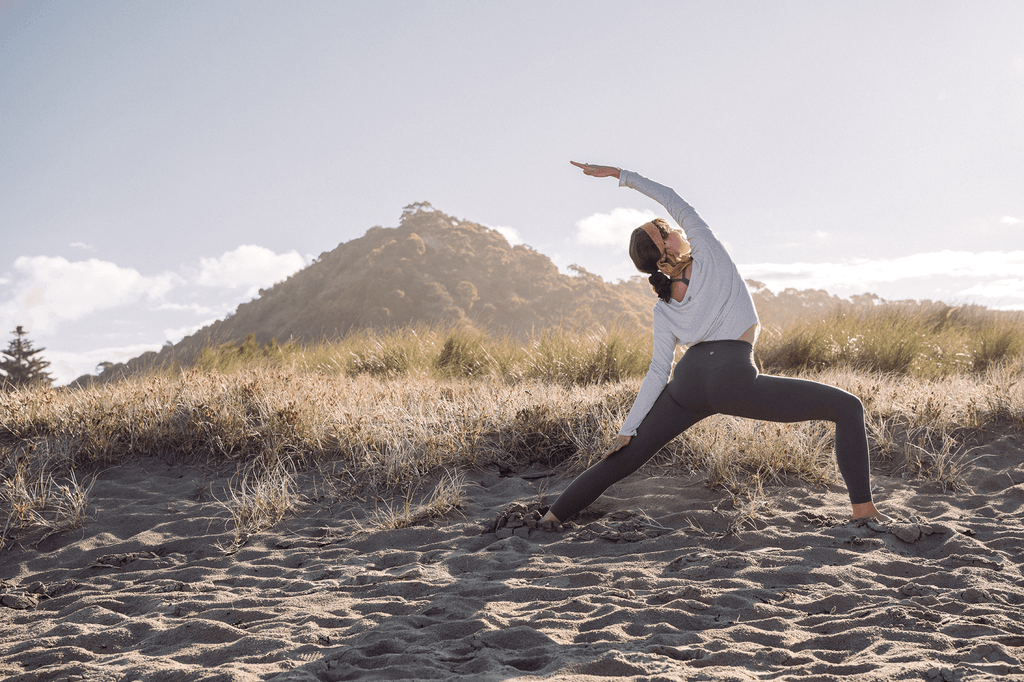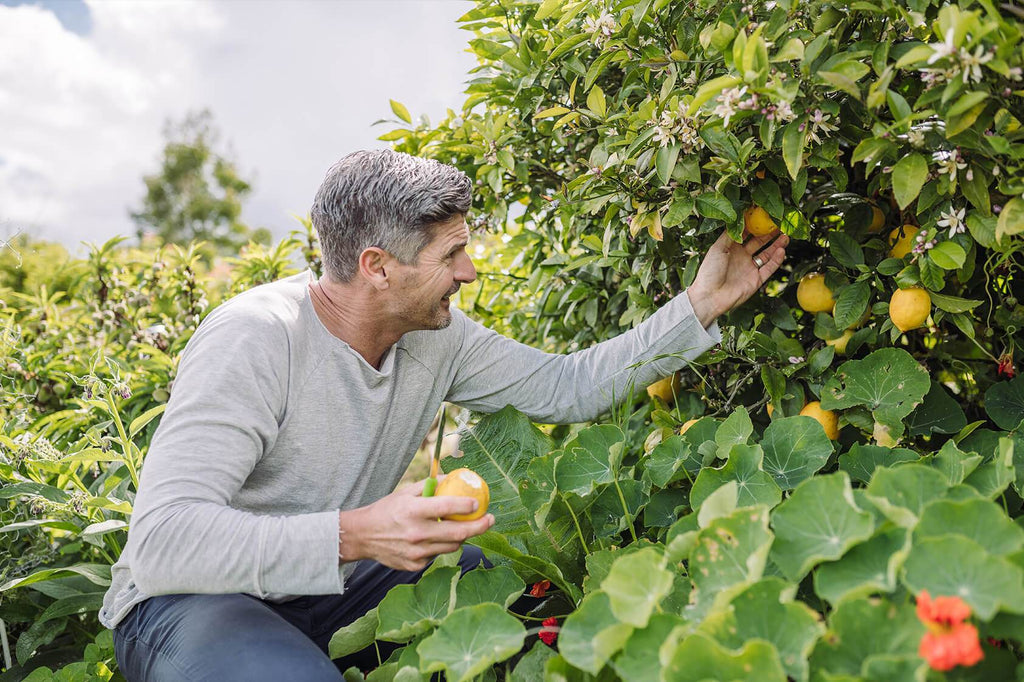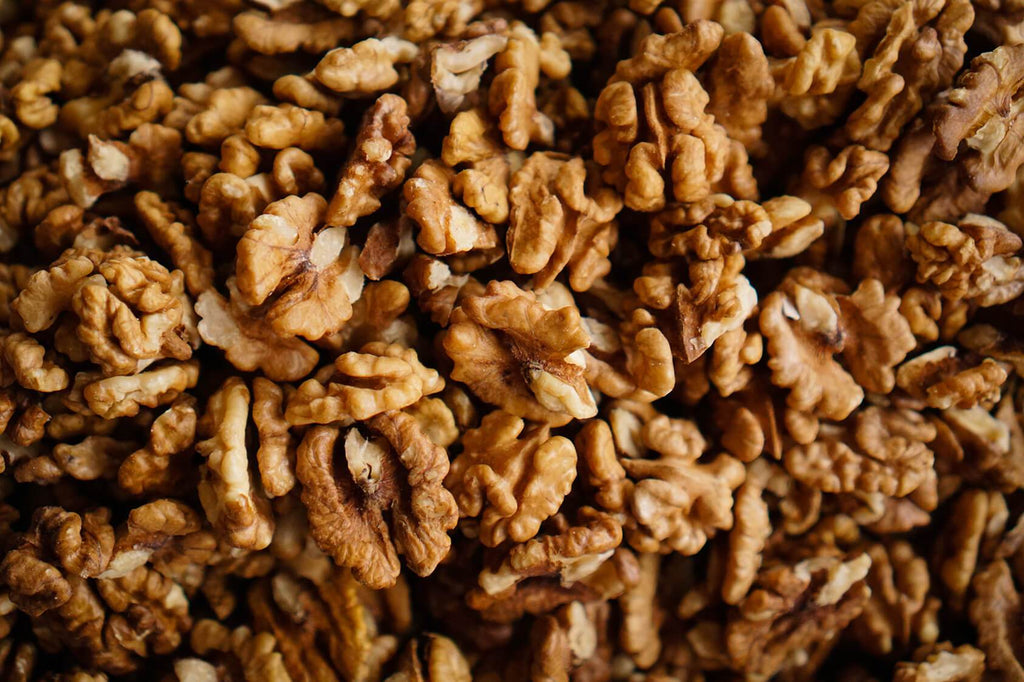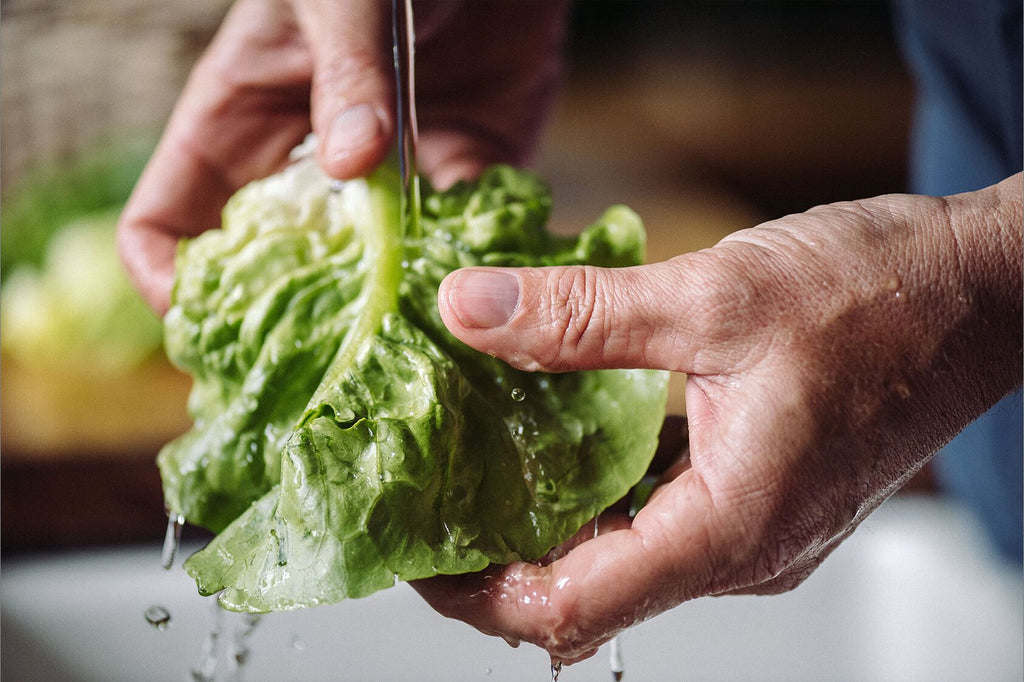
BePure Clinical Manager and BePure Holistic Health Consultant, Lisa Grey, shares with us lifestyle tips to support us in letting go of anxious thoughts, boosting our moods and living life fully.
First let’s understand how our lifestyle impacts how we feel day to day
The human body is in a constant state of change, responding to internal and external cues on daily, hourly and minute by minute bases. Our body is forever adapting to our environment to try maintain internal balance.
A relatively stable equilibrium of our internal environment is what scientists call homeostasis, which is maintained by the body constantly adapting physiological processes using constant monitoring via feedback loops.
Our body never stops evaluating the changes we make to what we do, eat and experience on a daily basis.
In layman's terms, our body never stops evaluating the changes we make to what we do, eat and experience on a daily basis and responds by adapting the level of hormones, neuro-chemicals, vitamins, minerals and other substances in our bodies.
It is for this reason that the activities and lifestyle choices we engage in on a regular basis have such an impact on our wellbeing overall. This process is why 80% of what you do, eat, think about and feel creates your experience of health and why the other 20% has little to no impact on your well-being.
80% of what you do, eat, think about and feel creates your experience of health and why the other 20% has little to no impact on your well-being.
For example, if an individual engages in regular exercise but misses 1-2 days per week at the gym, they will still get fitter, stronger and faster across time. Similarly if this same individual went to the gym sporadically, 1-2 times per fortnight, they would fail to make progress with their fitness goals. The moral of the story is consistency is key: what we do consistently matters for our health.
This statement is true for our mental wellbeing and mood, and why small changes to our daily routine can make us feel remarkably different across time.
Lisa’s Top 10 Lifestyle Tips to Support Anxiety & Mood
The following 10 tips are lifestyle changes you may want to consider adopting if you are looking to improve your mood state.
1. Exercise
Have you ever walked into a gym facility feeling glum and walked out feeling like you could take on the world? Exercise is one of the fastest mood altering activities we can engage in. Research has shown exercise to have a mood lifting effect, especially when done with others.
Moving our bodies raises our happy neurochemical (dopamine) and feel good endorphins, a sensation more commonly known as a “runner's high”. You don’t need to do hardcore activities like crossfit or HIIT training to feel this positive effect movement has on our neurochemistry. A light jog, dance class, pilates session, yoga class, or some form of resistance training is all it takes to change your mood state.
Some forms of exercise like yoga have also been shown to encourage the production of GABA, a neuro-calming and anti-anxiolytic neurochemical. If you find you are inclined to reach for a glass of wine to ‘unwind’ at the end of the day, try swapping it out for a regular 10 minute yoga session - both have the same GABA releasing effect and the swap will support your savings account as well as your mood.
2. Sleep
Believe it or not, our brain does have a lymphatic system… however, it has no ability to perform lymphatic drainage, detoxification or clear metabolic waste while we are awake. Crazy huh? It is only when we are sleeping that our brain has the ability to do an internal ‘spring clean’ and take out the garbage.
Research has shown clear correlations between poor sleep and a number of suboptimal health outcomes, many of which affect our mood state and mental wellbeing. Poor sleep has also been shown to have a negative impact on our bodies ability to stabilise blood sugar levels. If you’ve ever felt ‘hangry’ you have experienced the negative effect of blood sugar dysregulation on your mood. Be in bed by 10pm and aim to rise 7-8 hours later to help prevent you from saying “sorry for what I said when I was hangry”.
3. Meditate and be grateful
Whether or not you identify with your internal yogi or spiritual self, meditation and gratitude are good things for all of us. Meditation is a reflective practice in which the aim is to quieten the mind and bring awareness to the present moment to crowd out worries and woes for future or past events. This may include deep belly breathing, body scans, listening to a meditation app (like Insight Timer or Calm) or simply a reflective walk in nature.
There are many ways to meditate. You might find some easier to do than others, so find a way that works for you.
Regular meditative practice has been shown to change certain brain regions that are linked with depression and anxiety. Scientists have shown that a certain part of the prefrontal cortex and the amygdala become overactive in those with depression and anxiety.
The prefrontal cortex is where we process information about ourselves and process daily experiences on a cognitive level. If the thought patterns we repeat are ones of worry about the future or rumination about the past, the prefrontal cortex can go into overdrive leading to constant stress and anxiety.
The amygdala or our ‘fear centre’ is then set off by these thoughts to produce a fight-or-flight response. This fight-or-flight response is triggered by perceived or actual danger and induces the production of stress hormones from the adrenal glands, creating a whole body experience of fear, anxiety, helplessness or depression. Meditation allows us to let go of our worries and focus on the present moment, thus preventing the cascade of events in the brain that leads to anxiety and lowered mood states.
Psychology shows that which we practise physically, mentally and emotionally is what we master, thus adopting a daily meditation practice or gratitude practice (ideally via a gratitude journal) can support the mastery of gratitude and mindfulness.
Whilst this may sound airy-fairy, the science behind this is robust. In a state of gratitude we cannot manifest negative thoughts or engage in adverse mood states. This is because us humans cannot multitask (despite the common belief that the female species has this talent). Whilst we can do more than two things at any given moment, we can only focus intently on one thing at a time. This highlights the power of setting positive intentions and how simply changing our mental focus can alter the way we experience each waking moment.
4. LOL - laugh out loud
Have you ever heard the saying, “laughter is the best medicine,“ or "a laugh a day keeps the doctor away."
Although laughter did not evolve purely to make us feel good or improve our health, it is able to do both of these things by acting as an agent of social interaction. Laughter has been shown to unite people and encourage social support. According to research, social interaction improves mental and physical well being, and therefore the presumed health benefits of laughter may be coincidental consequences of its primary goal – to bringing people together. The verdict is yet to be released as to whether laughter itself is the agent that changes our mental well being or if the social interaction it encourages is the true agent of change.
A little laughter never hurt anyone, so grab a friend and crack open the joke book.
5. Get outside in nature
Spending time in nature reduces anxiety and improves mental wellbeing.
Make time during the day to step outside, breathe deeply, and go for a walk with Mother Nature. Take time to listen to the sounds of birds, the breeze, insects and whatever else your environment has to offer.
According to researchers, the greener the environment you choose to do this, the better for your brain. A backyard, beach, forest or park is more effective for reducing anxiety than a busy city environment but just getting outside is better than staying and staring at your screen.
6. Hang out with friends or furry friends
According to the old proverb, “a problem shared is a problem halved”. Talking to a trusted ally, friend, family member or health professional about your concerns has been shown to reduce anxiety, distress and depression.
If talking isn't your thing, just hanging out with people who make you feel safe, will have a positive effect on your neurochemistry. Research shows positive interaction with others to increase the levels of neurochemicals associated with happiness.
Sometimes being around people just feels like too much, in which case, hanging out with a furry friend might be there for you. Call it what you will, ‘animal therapy’ or the ‘pet effect’, any pet owner will tell you that living with a pet comes with many benefits, including constant companionship, love and affection. Not only are people happier in the presence of animals, they’re also healthier. One survey reported 74% of pet owners to have attained mental health improvements from pet ownership, and 75% of pet owners to have a friend or family member with mental health improvements from owning a pet.
The field of human-animal bond research is dedicated to studying the health benefits of pets and human-animal interaction. Positive human-animal interaction is related to the changes in physiological variables both in humans and animals, including a reduction of subjective psychological stress (fear, anxiety) and an increase of oxytocin levels in the brain. Studies demonstrate that these biological responses have measurable clinical effects. This area of research has demonstrated pets and therapy animals to be effective at helping alleviate stress, anxiety, depression, and feelings of loneliness and social isolation. Interactions with animals has also been shown to help people manage their long-term mental health conditions and prevent mental health relapse. Just a few of the great reasons to adopt a fur baby!
7. Listen to music
Sound therapies have long been a very popular way of relaxing and restoring mental health. For many centuries, indigenous cultures have used music to enhance well-being and improve health conditions.
Neuroscientists have since studied this phenomena and specified which tunes give you the most bang for your musical buck. One of these studies had participants attempt to solve difficult puzzles as fast as possible whilst connected to sensors to monitor their stress response to this. Researchers found the time pressured task to induce a certain level of stress at baseline, and monitored participants different stress responses whilst doing this same task and listening to different songs. Stress was measured using brain activity as well as physiological states of stress including heart rate, blood pressure, and breathing rate.
The most calming of all the songs used in this study showed to produce a 65% reduction in participants' overall anxiety based brain activity and induced as 35% reduction in stress induced physiological responses.
8. Go for a swim
Swimming has many known documented benefits and aqua-therapy has been employed for many years to aid those suffering from neurological conditions and PTSD.
This therapeutic use of water-based movement, encourages increased muscle tone, blood flow to the brain, mobility, motor control, coordination, and proprioception whilst decreasing swelling, blood pressure and skeletal misaligment. The increase in blood flow to the brain and spatial awareness that swimming ensues are of particular interest with regards to mood state.
Studies have shown these particular adaptations to water therapy (and other forms of exercise) to lead to positive cognitive changes and mood improvements in both those suffering from PTSD and neurological conditions or disabilities. Medical studies have also demonstrated aerobic exercises to play a pivotal role in PTSD recovery and noted it as a positive therapeutic intervention for depression and anxiety.
9. Hug it out!
Have you ever seen a child sobbing be picked up by their parent and almost instantly cease to be upset? This is the power of oxytocin. Oxytocin is our human bond neurochemical and is elicited primarily by human touch. Oxytocin has a calming effect on the brain and body and is part of the reason why human interaction is so important for our mental well-being in general. A hug, hand-shake, cuddles, and sex all increase oxytocin – so go get some.
10. Become a part-time technophobe (even if only in the evenings)
While TV and computer time may seem relaxing and regenerative –which they can be for a bit, but– within a short time can be draining. Anyone who has watched a Harry Potter marathon over a weekend can tell you they feel anything but relaxed and recharged.
Sleep is as essential to our wellbeing as food, air and movement.
Research has shown increased computer, cellphone and technology use especially at night to have a negative impact on our sleep quality and quantity. It is during this peaceful time of the day that our bodies looks for external cues of darkness, cooler temperatures and amber coloured light (similar to that of candle light or fire) to prepare the body for deep sleep, rest and digest. When our brains are exposed to the artificial light of a technological device, this process inhibited and sleep becomes suboptimal. Sleep is as essential to our wellbeing as food, air and movement, and compromised sleep quality and quantity has been associated with a number of disorders - including mood related conditions, neurological diseases and hormonal complaints.
Social media use has also been correlated with depression and anxiety in teenagers. One of the theories behind this is that humans traditionally lived in groups, tribes or villages of roughly 150 people. To ensure social safety in these times and attain a sense of belonging, we only had to impress or feel liked by the majority of these people with whom we would have shared many commonalities with and engaged with regularly on a social level. Today teenagers face this same want for social acceptance and safety but are exposed to the opinions of 100s to 1000s of facebook or instagram followers. This poses significant social pressure for society today and ensues a greater level of social anxiety.
Increased social media use has been linked to feelings of loneliness, sadness, anxiety and depression but causation has yet to be established. Science has shown the neurochemical response to a social media ‘like’ or nice comment to be incomparable to the overwhelmingly positive response our body makes during face to face contact. For this reason, a number of sociologists are encouraging businesses and schools to bring back human interaction.
What we do on a regular basis provides our bodies with the information needed to make decisions about how to balance hormones, happy neuro-chemicals and physiology. Engaging in one, some or all of these activities on a regular basis will help to train your body to have a lowered baseline of stress and help you to develop stress resilience.
Rest based living is comprised of the conscious and intentional pursuit of activities that rest, relax, recharge and recover our energy and brain that has accustomed itself to the fast-paced modern lifestyle. This concept of "rest-based living" needs to be become the centrepoint and priority of anyone wishing to keep their brain functioning at a high level, especially as they age.






